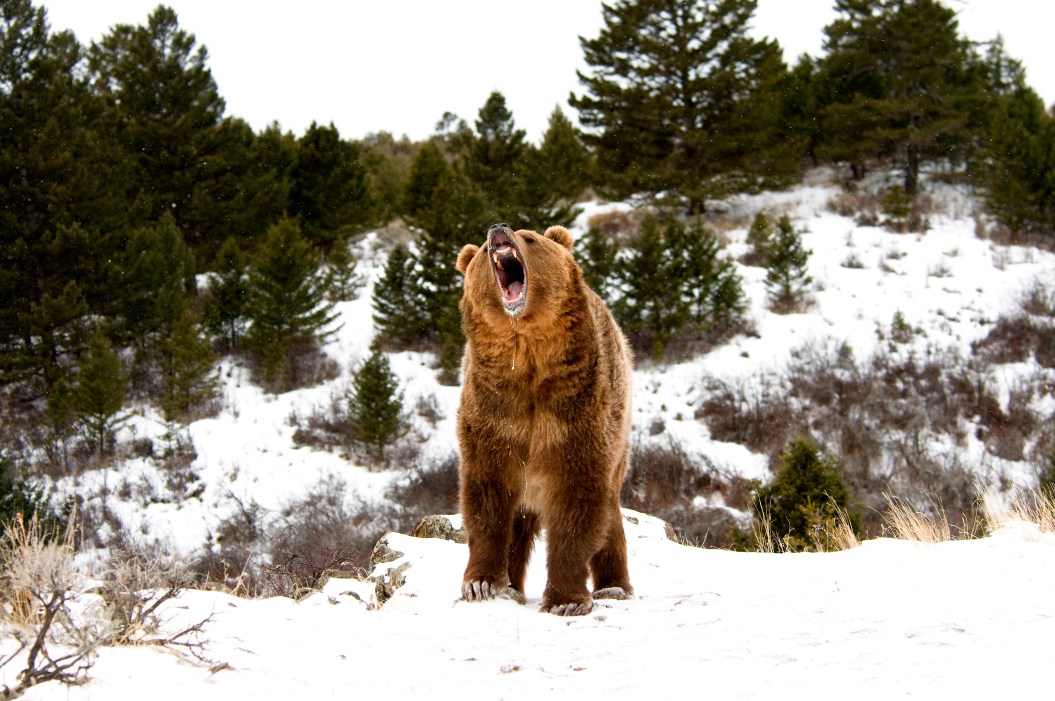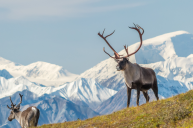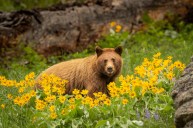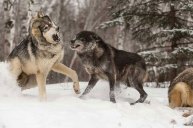Bears may look cute and cuddly, and their impressive appearance, athleticism, and intelligence make them intriguing to humans. But they are also one of the top apex predators in the world with enough bite force to crush a bowling ball. The good news: They generally don't want anything to do with humans any more than you want to encounter a bear.
And while it seems like all bears are huge, some are considerably larger than others. Of the four major species of bear that are hunted—black bear, grizzly bear, Alaskan brown bear, and polar bear—these four are the kings, as documented by the Boone and Crockett Club, an organization dedicated to the conservation and ethical management of wildlife habitat since 1887.
Bear Facts
Bears are mammals that belong to the Ursidae family. Common characteristics include five nonretractable claws, short tails, and an excellent sense of smell. Interestingly, their senses of sight and hearing aren't highly developed, so most of their hunting is done by smell.
Bears tend to live solitary lives, except for mothers (sows, versus boars) who keep their cubs with them for 17 months to two years.
Types of Bears
There are eight different species of bear:
- North American black bears (Uursus americanus)
- Brown bears (Ursus arctos, which include grizzly bears and Kodiak bears)
- Polar bears (Ursus maritimus)
- Asiatic black bears (Ursus thibetanus; also called moon bears)
- Giant pandas (Ailuropoda melanoleuca)
- Sun bears (Helarctos malayanus, which are the smallest species of bear)
- Asian sloth bears (Melursus ursinus, also called Indian bears)
- Spectacled bears (Tremarctos ornatus, also called Andean bears or South American bears)
These eight main species also have a variety of subspecies; for example, Kodiak bears are a brown bear subspecies and are some of the largest bears.
Bear Lifespan, Diet, and Behavior
On average, bears live 10 to 20 years, depending on the species, and although they're usually at the top of the food chain with very few natural predators or threats, individual circumstances such as diet, habitat, disease, and human conflict affect their longevity.
The way a bear lives is dictated largely by its environment. Polar bears are carnivores—meaning they eat only meat—because vegetation is hard to come by in the arctic environment in which they live. On the other hand, the giant panda, native to the mountains of south-central China, is an herbivore and eats only plants with bamboo making up 99 percent of its diet.
All other bear species are omnivorous, meaning they eat both meat and plants. Depending on their local ecosystem, a bear's diet generally consists of seeds, roots, nuts, insects, and many different kinds of animals.
Bears' diets also adapt to what's available to eat. Grizzly bears—a North American subspecies of the brown bear—are skillful fishermen who target salmon during their spawning season. The Asian sloth bear eats termites with its funnel-like lips.
Before winter, most bears will excessively eat (a behavior called hyperphagia), consuming up to 20,000 calories a day and gaining as much as 30 pounds a week, before heading into hibernation, a minimally active state that conserves energy when food sources are depleted.
Third-Biggest Bear in the World: Black Bears
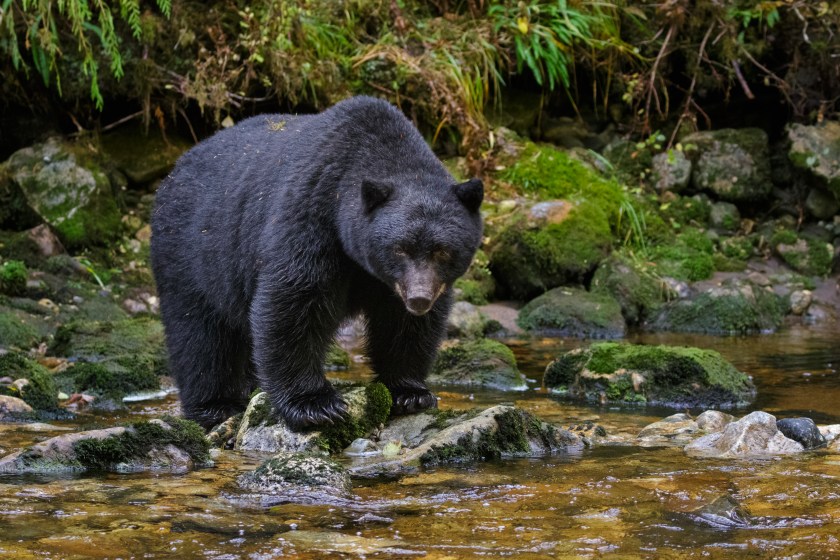
Getty Images, KenCanning
Native to North America, black bears are common in the Pacific Northwest, as well as in Canada, Alaska, the Rocky Mountains, the upper Midwest, the Appalachian Mountains, and Mexico. They live in a range of about 15 square miles, following the seasonal changes to find various food sources. They're also considered the raccoons of the bear world, choosing to feed on whatever is available. Although they typically eat grasses, roots, berries, and fish, they won't hesitate to eat human food if they can get their paws on it.
When it comes to size, adult male bears are generally 5 to 6 feet tall and can weigh between 200 and 600 pounds, making them the smallest North American bear. Black bears also have small heads with straight-line profiles, rounded ears, non-retractable claws on their paws, along with an incredible sense of smell.
The world-record black bear skull scores 23 10/16 and was picked up in the wild in Sanpete County, Utah, in 1975. Boone and Crockett indicate that the greatest length of the skull without a lower jaw is 14-12/16 inches, and the greatest width of the skull is 8-14/16 inches.
For comparison, Robert Christian's 2011 world-record, hunter-taken black bear had a skull that scored 23 9/16. Christian's bear was not the heaviest on record, but its skull is the largest for a black bear taken by a hunter. His bear weighed 733 pounds. Heavier bears have been taken, including several that have approached 900 pounds.
Second-Biggest Bear in the World: Brown Bears
Kodiak and grizzly bears are technically classified as the same species, commonly known as the brown bear, but there are notable differences between the two, chief among them is geographic location. Brown bears can be found across North America, Europe, and Asia, and their size varies based on their habitat and available food resources.
Grizzly Bears
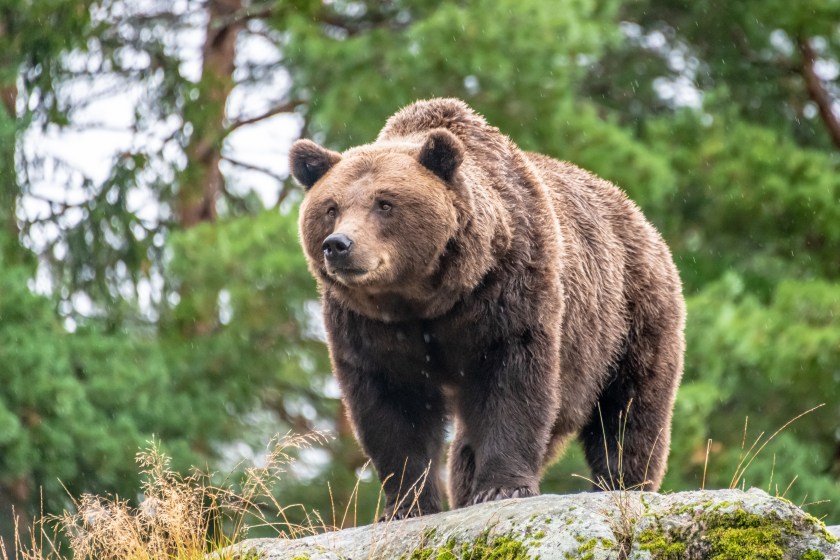
Getty Images, Thomas Faull
Named because its hair is grizzled (i.e., silver-tipped), the grizzly bear (Ursus arctos horribilis, Latin for "terrifying bear") is a subspecies of the brown bear. Grizzlies can live 20 to 25 years. Although slightly smaller than the Kodiak bear, the grizzly's powerful build and sharp claws make it a force to be reckoned with.
Found primarily in the western U.S. (Alaska, Wyoming, Montana, Idaho, and Washington) as well as western Canada, the grizzly bear's appearance is notable because of its large size and the distinctive hump between its shoulders. Adult male bears can weigh anywhere from 300 to 800 pounds and stand up to 8 feet tall on their hind legs, while adult females weigh between 200 and 450 pounds.
The biggest known grizzly bear was found by Gordon E. Scoot in 1976 in Lone Mountain, Alaska. Measuring 17-4/16 inches by 10-9/16 inches, the skull scored 27 13/16 points. The bear's weight isn't available because only the skull was recovered, and the hunter stored the skull in his attic for 30 years before having it officially scored.
In comparison, Larry Fitzgerald's 2013 hunter-taken, world-record grizzly scored 27 6/16, just 7/16 shy of the all-time world record. Fitzgerald's bear also measured nearly 9 feet tall.
Kodiak Bears
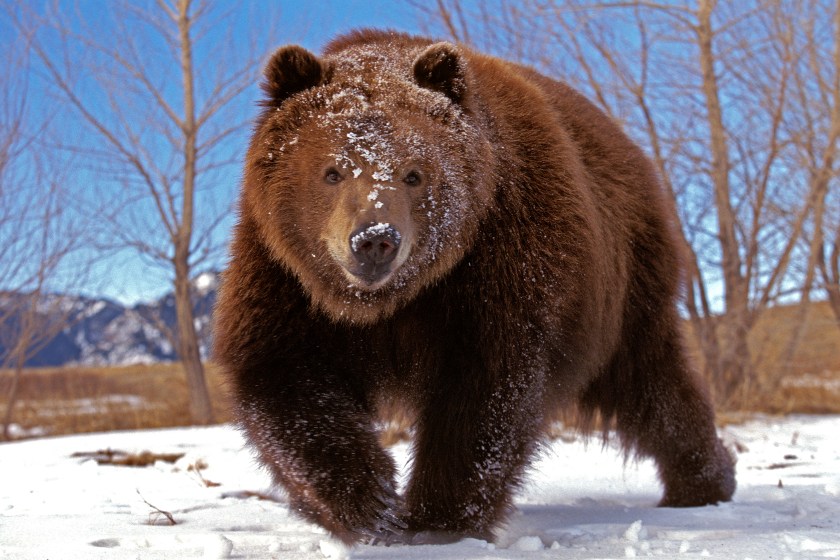
Getty Images, slowmotiongli
The Kodiak bear is a true heavyweight in the bear world. This unique subspecies (Ursus arctos middendorffi) of the brown bear lives exclusively in Alaska's Kodiak Archipelago, which includes Kodiak Island and the surrounding islands of Afognak, Shuyak, Raspberry, Uganik, Sitkalidak, and others.
Kodiak bear populations are healthy and productive; there are an estimated 3,500 Kodiak brown bears on the Kodiak Archipelago, with their diet and habits being similar to those of other North American brown bears. Their habitat is relatively pristine with a well-managed fish population, which may be why they live an average of 20 to 30 years. The abundance of food is also attributed to why they grow so large.
Larger-boned than grizzly bears, Kodiak bears are the largest brown bear and the second largest bear in the world, placing just behind the polar bear. A large male, called a boar, can stand over 10 feet tall when on his hind legs, and 5 feet at the shoulder when he's got four on the floor. Kodiak bears can also weigh up to 1,500 pounds. Females are about 20 percent smaller and 30 percent lighter than males.
In 1952, Roy Lindsley set the world record for taking down the largest Alaskan brown bear, and the record still stands today. Taken on Kodiak Island in Alaska, the bear scored 30 12/16 points with a skull that measures 17-15/16 inches long and 12-13/16 inches wide.
Lindsley was on a hunt for a specimen to donate to the Los Angeles County Museum and was reportedly told by his guide to not shoot this particular bear, as there was a bigger one to be had. But he took the shot and ended up with a world-record bear.
The Biggest Bear in the World: Polar Bears
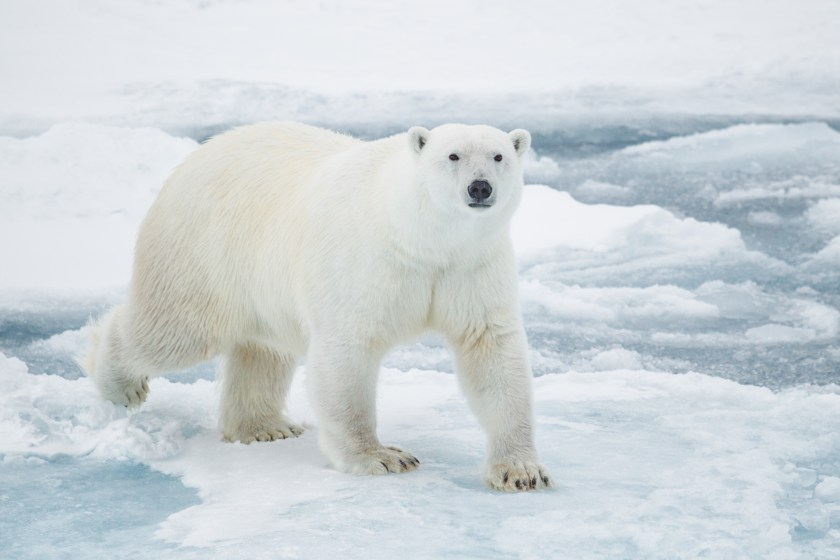
Getty Images, : KenCanning
Polar bears (Ursus maritimus) are not only the largest bear species in the world, they're also the largest living carnivores. They're found within the Arctic Circle but also roam throughout stretches of Greenland, Canada, Russia, Alaska, and Norway. Able to swim for long distances in freezing water, polar bears rely on meat more than other bears, feasting on seals, walruses, small whales, and fish.
Unfortunately, polar bears are the poster child for climate change. Global warming has been most pronounced in the Arctic, and because polar bears rely heavily on the thick sea ice for traveling, hunting, and resting, this habitat loss will inevitably make polar bears more scarce.
Male adult polar bears weigh between 770 and 1,500 pounds, and females typically weigh between 330 and 550 pounds, although they can easily weigh 1,100 pounds when they're pregnant. As a result of adapting to their environment, polar bears typically have a longer, more narrow skull than the Alaska brown bear.
The world's largest polar bear was shot by Shelby Longoria in 1963 in Kotzebue, Alaska. This massive bear had a skull that scored 29 15/16, with the greatest length of skull without lower jaw equaling 18-8/16 inches, and the greatest width of skull sitting at 11-7/16 inches. Standing over 11 feet tall and weighing more than a ton, Longoria's polar bear was an absolute brute.
Two years prior, in 1961, Arthur Dubs took a polar bear that stood over 11 feet tall and weighed more than 2,000 pounds, which was almost as large as Longoria's but not quite. That's still a big bear!
READ MORE: How Big Is a Moose When It's Fully Grown?
—
